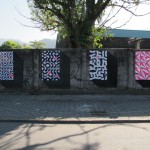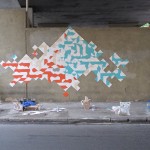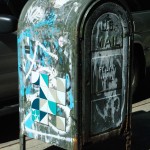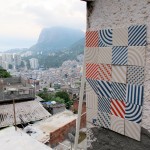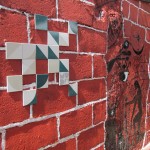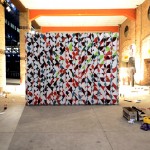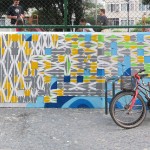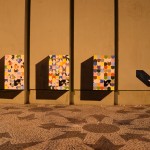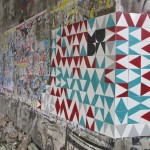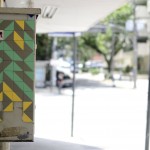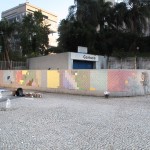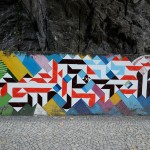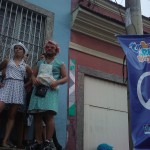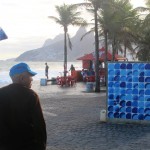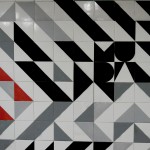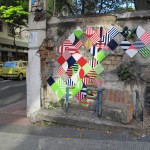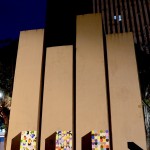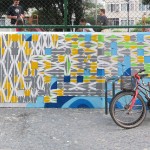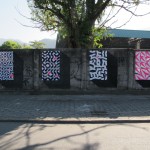By Nathan M. Walters, Contributing Reporter
RIO DE JANEIRO, BRAZIL – Antoni Gaudí, the Catalan architect responsible for some of Barcelona’s most stunning landmarks, most notably Park Güell and La Sagrada Família, once said, “My master is the tree outside my window.” The idea is summed up eloquently by Coletivo MUDA, one of Rio’s most original street artist groups, when they state: “The streets speak to us.”

MUDA, a collaboration of Carioca designers (Bruna Vieira, João Tolentino) and architects (Diego Uribbe, Duke Capellão, and Rodrigo Kalacheand), is furthering the development of street art by reconstructing the history of Brazil.
Moving beyond the identifiable aesthetics of modern graffiti and into a yet-to-be-defined potential of what public art can be. Their medium, ceramic tiles.
Geometry for the masses might be one way of describing MUDA’s street work. The collective, has its roots in graffiti but was looking for a way to reach a broader audience.
“A large percentage of people just tune graffiti out, they may be standing right in front of it but they don’t see it,” an excited João states, “We want everyone to feel something when they see our compositions, the wealthy banker and the homeless man, our decisions on location and design are made with this in mind.”
“When we started with our project we studied the history of ceramic tiles, the information they contain about Brazil, the country’s heritage.” Historic tile art can be found around the globe, selected by governments to represent the fortitude of the polis in which they are constructed.
Brazil has relied on the medium to represent its own resilience; Brasília is replete with tile works by Brazilian artist Athos Bulcão who worked on many Niemeyer projects intended to show the glory and endurance of a new Brazil.
“We have a fascination with the aspect of time in our work. Ceramic tiles are resilient, yet our designs, the paintings on the tile, will fade,” mentions Kalache. “This interaction of natural process and the composition is interesting to us.” The tiles for their larger compositions are custom-made in Itaipava, where the designs are kilned into the tile to prevent aging. For smaller works the group meticulously paints each tile by hand.

The designs themselves are a seemingly chaotic mix of color and shape, yet nothing is random. “When we are planning a piece we may do a hundred drawings. Once we get to a site to install the piece, things change, which works well with our concept of being an experimental group,” states João.
This response to environment is endemic to graffiti and shapes MUDA’s work as well. “Sometimes we study a space and then show up and say, ‘I don’t like the shadow of that tree.’ Then we have to go and look for another spot.”
MUDA, which can be translated as both the imperative “you change!” but also refers to the seedlings of plants, is growing in many directions. The members still maintain successful businesses but are increasingly focused on exploring the limits of their street work. “We are still balancing both, but they are complimentary so, for now, we just go with the flow.”
In Rio, the streets keep speaking to artists like MUDA, which can only be celebrated. The result is a diverse and vibrant dynamic to the city’s historic lucidity, and hopefully a positive response to MUDA’s request: change!


